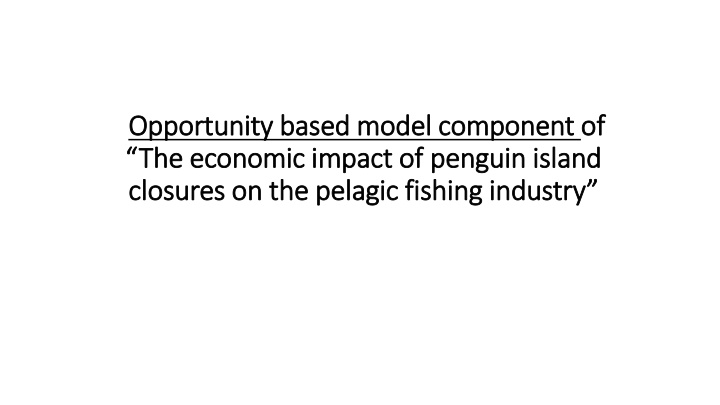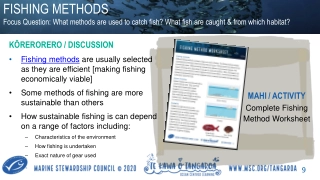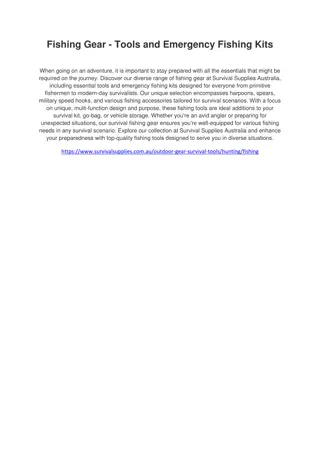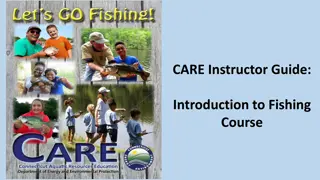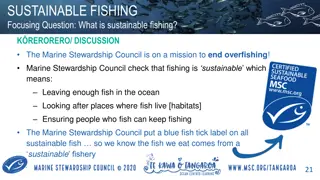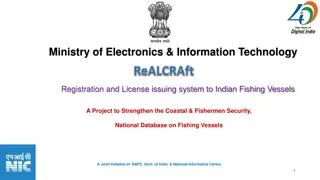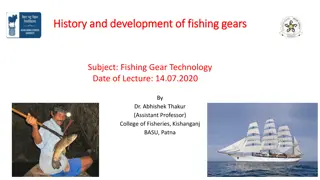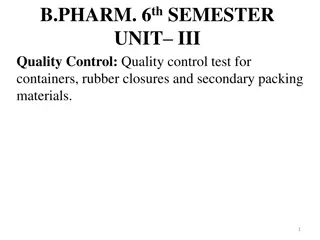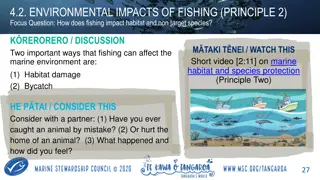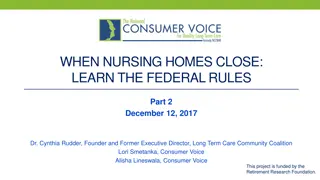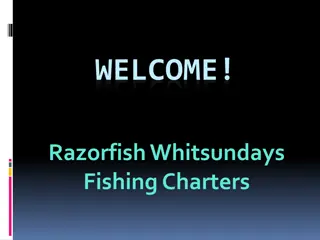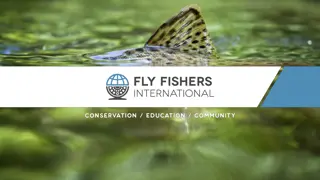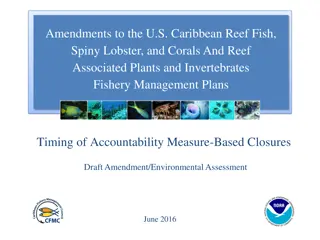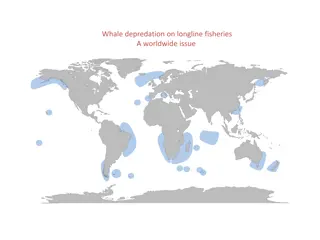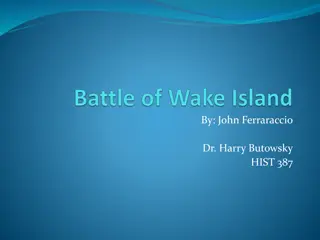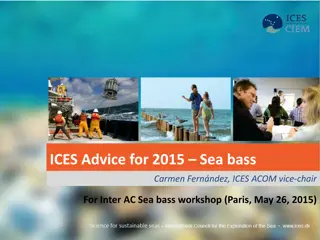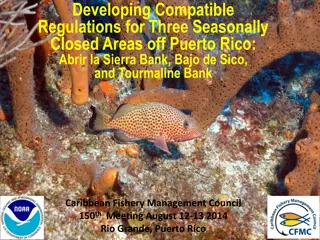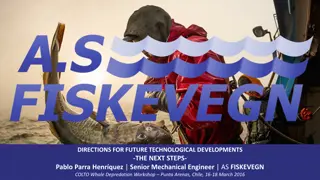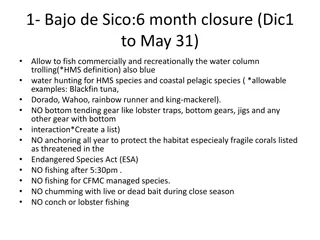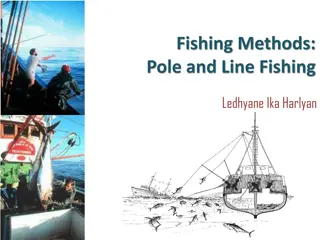Economic Impact of Penguin Island Closures on the Pelagic Fishing Industry
This study examines the economic impact of closures around Penguin Island on the pelagic fishing industry, considering factors like fishing adjacent to protection areas, effects on anchovy volume, and alternative fishing opportunities. It proposes an opportunity-based model to assess historical fishing records and evaluate the implications of protection area closures on fishing activities.
Uploaded on Feb 23, 2025 | 2 Views
Download Presentation

Please find below an Image/Link to download the presentation.
The content on the website is provided AS IS for your information and personal use only. It may not be sold, licensed, or shared on other websites without obtaining consent from the author.If you encounter any issues during the download, it is possible that the publisher has removed the file from their server.
You are allowed to download the files provided on this website for personal or commercial use, subject to the condition that they are used lawfully. All files are the property of their respective owners.
The content on the website is provided AS IS for your information and personal use only. It may not be sold, licensed, or shared on other websites without obtaining consent from the author.
E N D
Presentation Transcript
Opportunity based model component Opportunity based model component of The The economic impact of penguin island economic impact of penguin island closures on the pelagic fishing closures on the pelagic fishing industry of industry
1. Original approach Whether fishing adjacent to penguin protection areas is more expensive (lower catch rate) 2. Additional approach: Whether closures reduce the volume of anchovy and related species that are caught Fishing opportunities limited in time and space: West coast anchovy recruits move down the coast in pulses. Periodic weather events disrupt the pattern of aggregation of anchovy. Following strong upwelling it takes time for phytoplankton growth and secondary zooplankton growth to reach a point where anchovy are able to feed near the surface. Additional factors are constraints on processing capacity and the need to get product to factories within < 30 hours to maintain quality. Opportunity based model review historical fishing records on a set by set basis and determine what would have happened with penguin protection area closures
Categorisation of alternative opportunities: Adj, Adj2, Other Island, Gansbaai, St Helena Bay, Extra Grids Dassen Island
OBM Approach 1. For the i-th set a determination is made whether it occurs in an intersecting grid or not. 2. If the i-th set lies within an intersecting grid, then a random selection is made as to whether it lies inside the penguin closure area or outside the penguin closure area. This is based on the proportion of area for that grid which is inside / outside the penguin protection area. 3. A search is carried out to determine the existence of viable alternative opportunities, at a given point in the search hierarchy. The search hierarchy is Other Island, Adj, Adj2, Gansbaai, St Helena Bay, Extra. These alternative opportunities are unique to each grid, and may therefore include intersecting grids in the case of the Adj and Adj2 level of the hierarchy. 4. If a viable opportunity exists at a particular level of the hierarchy, further searches at later levels in the hierarchy are not carried out. 5. If an alternative opportunity exists which is itself within in an intersecting grid, a random selection process is carried out to determine if that opportunity is viable, i.e. lies outside the penguin protection area. This random selection process is based on the proportion of area for that grid which is inside / outside the penguin protection area. 6. Opportunities are average standardised catches at a day and grid level. 7. Finally (a) the replacement opportunity is randomly selected from the finalised set of viable opportunities, (b) the replacement catch is constrained to not exceed the catch that is being replaced, and (c) the replacement catch is corrected for (multiplied by) the boat factor for the vessel in question.
Process Interim Presentation to PWG Query Alternative Opportunities . Final Report to PWG: mid October. Feedback 1. Reduce vessels 2. Increase survey days 3. Increase Opportunities 4. Editorial Minor 4. Editorial Moderate 5. GLM Analyses 7. Revise Economics 8. Resolve Grids / Duplicates
Results of Resolving Duplicates More catch on the West Coast More catch in penguin protection areas A smaller % of the above is unreplaceable (from 50% to 40%)
